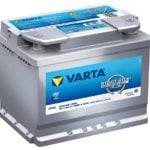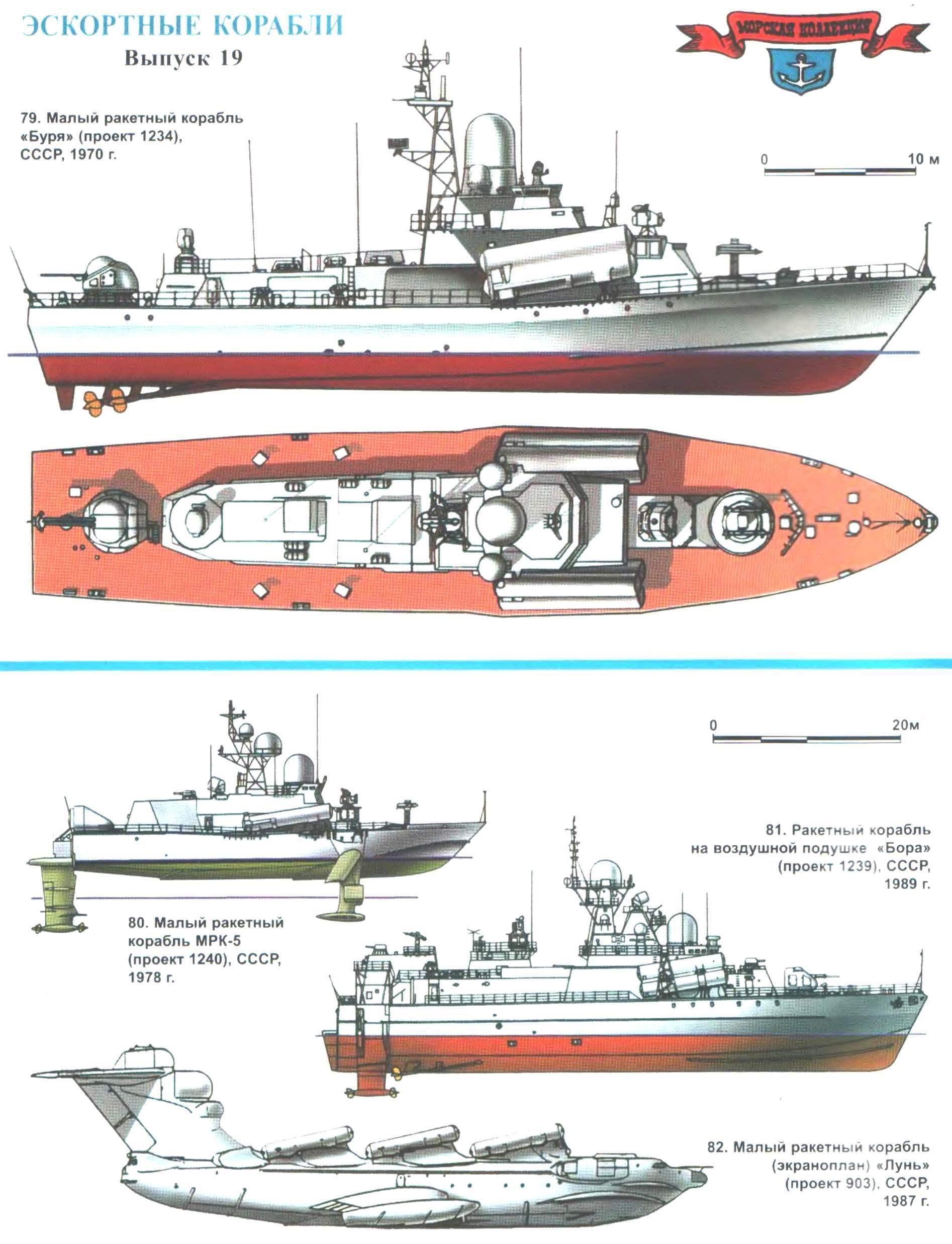 In the 60-ies of XX century the concept of the IUD in the hypothetical third world war Soviet and Western experts met in completely different ways. For example, admirals from the Pentagon, the main force of the fleet was considered a carrier group, and numerous surface ships of other classes one way or another was considered only as a means of carriers, protection. In the USSR before the surface fleet posed a few other problems — primarily to fight aircraft carrier connections, as well as enemy nuclear submarines near its shores.
In the 60-ies of XX century the concept of the IUD in the hypothetical third world war Soviet and Western experts met in completely different ways. For example, admirals from the Pentagon, the main force of the fleet was considered a carrier group, and numerous surface ships of other classes one way or another was considered only as a means of carriers, protection. In the USSR before the surface fleet posed a few other problems — primarily to fight aircraft carrier connections, as well as enemy nuclear submarines near its shores.
However, with increasing flight range launched from submarines of ballistic missiles, the second problem became less relevant, and the newly created Soviet ships more and more focused on the first. “The killer of aircraft carriers” — which are just the carriers of cruise missiles has been given it is somewhat arrogant nickname! In the years of the cold war, the so-called nuclear submarine several projects, and cruisers, and missile destroyers… But it clearly has a desire to indulge in wishful thinking: in reality the “punch” among the missile defenses of an American carrier battle groups would not be so easy. However it is this fairly a simple plan theory of a massive strike (missiles have to fly further, and their number in the sequence to be as large as possible) largely determine the evolution of the Soviet Navy over the past three decades of its history.
The influence of the “missile shock doctrine” is not avoided even by small surface ships. In the West, revived in the 1960-ies corvettes were intended solely for escort purposes, in our country, the shipbuilders went their own way. Along with the IPC (see “modelist-Konstruktor” No. 11 of 2004) in the USSR has created a new class of small missile ships (MRK), having no analogues abroad. They were intended for missile strikes at the joints of enemy ships in the open sea in a relatively short distance from their shores.
IRAS compared to boats had better seaworthiness, carrying more powerful missiles and equipped with means of over-the-horizon targeting; from destroyers and large missile ships they differed significantly smaller dimensions and cost. Thus, although Western experts and brought the IRS to its classification for corvettes, in fact it was rather the destroyers — the only difference is that their main weapon is the torpedoes became guided missiles.
The development of the first RTOS project 1234 began in Leningrad in 1965. At first, in the documentation it was listed with a missile boat, but it soon became clear that it should create a new class. Compared with the predecessor, the rocket boat project 205, standard tonnage increased 3.5 times and exceeded 600 t However, and combat capabilities has increased dramatically. Instead of two or four missiles P-15 with a range of 80 km ships of the project 1234 was carrying six new missiles P-120 “malachite” with a range of 115 km. For its time a very impressive look and antiaircraft-defense — missile system “OSA-M” and the coupled 57-mm automatic gun mount. To match their it and electronic equipment; its members, in particular, for the first time entered the regular system of warfare. All the weapons could be used in waves up to 5 points inclusive is a decent figure for a vehicle of small displacement and “boat” hull.
Head MRK “Burya” was founded in Leningrad in January 1967 and after extensive testing became part of the black sea fleet in 1970. All the factories in Leningrad, Rybinsk and Vladivostok was built 47 ships of this type, including 10-for export to the Indian Navy, Libya and Algeria. In our fleet they inherited the names of pre-war patrol ships of the type “Uragan” (also, in fact, were the destroyers) — “Whirlwind”, “Storm”, “Storm”, “Hail”, etc. the Last 20 serial IRAS, since “the Breaker”, distinguished by a reinforced artillery weapons on them instead of 57-mm guns mounted on one 76-mm six-barreled 30-mm gun (project 12341). Export ships instead of missiles “malachite”, which was considered secret, was equipped with four containers with ASM P-20, representing a modification is widely spread all over the world missiles P-15.
Two representatives of a new “division of bad weather,” died at sea among the ships built in the second half of the last century this is rather uncommon. On 25 March 1986 Libyan Corvette “EAP, Zagut” (formerly MRK-15) was sunk by American aircraft from the carriers “Co-RAL si” and “Saratoga” during the demonstrative “punishment” of a crooked ruler Gaddafi (operation “Fire on the Prairie”). The ship was struck by two guided bombs “Rocky” and then the rocket “Harpoon” category attack the “Intruder” from a distance of 9 miles. (By the way, in the domestic literature the sinking of a Libyan Corvette usually attributed to American cruiser “Yorkt-UN”, but this is obviously an error. “Yorkt-UN” really night of March 25, fired two anti-ship missiles “Harpoon” is detected by a radar target and reported its destruction. However, it later emerged that no real objects in the square that night was not. One of the American admirals, which handled the incident, suggested that “Lorkhan”… attacked a flock of migrating birds!)
In the following year died another MRK — Soviet Pacific Musson. April 16, 1987, in the course of firing exercises in the sea of Japan him spontaneously brought rocket “malachite”, were used as projectile-target and released the same type of ship “Whirlwind”. Musson tried to run her down, having to give all of the 57-mm gun and fired two missiles “OSA-M”, but it yielded no result. The missile-target although there were no combat troops, but, once in the add-in has caused massive destruction and fire. The ship burned for hours and eventually sank at a great depth 33 miles from the island of Askold. In a cruel twist of fate, this tragedy became the sole fact of using Malakhit ASM on the real goal. She confirmed the high efficiency of the missiles and the lack of survivability of ships superstructures of aluminium alloy.

79. Small missile ship “Storm” (project 1234), USSR, 1970
Built in Leningrad shipyard in Primorsky shipyard. The standard displacement 610 t, total 700 t maximum Length of 59.3 m, width 11,8 m, draft 3 m. the three-shaft diesel Power installation 30 000 PS, speed 35 knots. Armament: 6 PKR P-120 “malachite”, 1×2 PU SAM “OSA-M”, 57-mm automatic cannon. Only in the 1970— 1992 47 built a few different units, including 10 — for export to the Indian Navy, Libya and Algeria.
80. Small missile ship MRC-5 (project 1240), USSR, 1978
Built in Leningrad shipyard in Primorsky shipyard. The standard displacement of 342 tons, full 430 m maximum Length of 49.8 m, beam 10.2 m, draft 2.8 m (raised wings). Power diesel gas turbine plant 36 000 HP, speed of 57 knots. Armaments: 4 PKR P-120 “malachite”, 1×2 PU SAM “OSA-M”, one six-barreled 30-mm gun. After completion of the tests on the Baltic sea was transferred to the Black sea, decommissioned in 1990.
81. Missile hovercraft “Bora” (project 1239), USSR, 1989
Built in Zelenodolsk. Full displacement of 1050 tons, the greatest Length of 63.9 m, width 17.2 m, draft 3.3 m Power diesel gas turbine unit 66 600 HP, 50 knots. Armament: 8 anti-ship missiles “Mosquito”, 1×2 PU SAM “OSA-M”, one 76-mm gun mount and two six-barreled 30-mm gun. Only 1989 — 1992 built two units.
82. Small missile ship (wig) is a LUN-class ekranoplan (project 903), USSR, 1987
Built in Gorky. Full load displacement 380 t maximum Length of 73.3 m, width (wingspan) 44 m draught 2.5 m. Thrust turbojet engines 104 000 kg, speeds up to 270 knots. Armament: 6 anti-ship missiles “Mosquito”, one twin 23-mm gun mount. Just built two units (the second wig — in variant of the lifeguard).
If MRK project 1234, as already stated, had no analogues in the world, then their followers — the ships with dynamic principle of maintaining CDP (hovercraft and hydrofoils) — their uniqueness even brought foreign experts into a state of extreme amazement. Still: 432-ton MRK-5 (project 1240, code name “Hurricane”) with Titan deeply submerged hydrofoil, the test was developed the course of nearly 60 knots, and the catamaran hovercraft “Bora” (project 1239) with a displacement of more than 1000 t — 53 site (about 100 km/h)! In the West, nothing like this, and there is still.
In fact, creating these really unique and the swiftest ships in the world was the result of previous misconceptions like high speed ships will provide radically new military capabilities. Yes, nobody argues that in recent decades the struggle for the speed was one of the key objectives of the shipbuilders, however, after the Second world war the situation changed dramatically. The advent of radar, guided missiles and jet aircraft, and then satellite reconnaissance systems and over-the-horizon target detection has led to the fact that the maneuverability of a warship’s speed no longer played a role. It is not surprising that over the past half century this characteristic of the newly built ships has not increased, but rather decreased. But in the Soviet Union, many high-ranking officials of this trend are hard to ignore. And the desire to “sorbitrate” warships fired their minds for a very long time.
Design drawings ship hydrofoil project 1240 was conducted at the Leningrad KB “Diamond” from the mid 1960-ies. As the prototype was built full-scale sample is a passenger ship “Typhoon”, which in 1969 — 1970 worked out system of automatically controlled deep wings and venerolog complex. Directly the project “Hurricane” managed to turn the metal only in the late 1970-ies, when, after protracted trials in the black sea fleet entered the red banner MRK-5. It was equipped with lifting wings of titanium (in the raised position the front fender had the “plane” sweep and gave the vehicle a futuristic look) and the original propulsion installation, comprising two pairs of tandem propellers on the aft wings and two jet to move in the displacement condition. Propellers full speed rotated through an angular reducer with two gas turbines, water jets small stroke diesels. Armament consisted of four drums of missiles “malachite”, anti-aircraft missile complex “OSA-M” and six-barreled 30 mm AK-630.
MRK-5 is in experimental operation until 1990. He showed great driving performance (top speed over 50 knots on a five-point wave), but the reliability of the bulky wing system left much to be desired.
Ship of the project 1239 Bora was originally literalvalue marking MRK-27, looked even stranger. Under the scheme it was dvukhtochechnoi Segovia the hovercraft (SVP), or, as it is called, a catamaran with aerostatic air discharge. High speed kdpp this was achieved by reducing the resistance to movement due to air injected under the flat bottom, limited at the sides by longitudinal keels (segami). In the bow and stern parts of the bilge installed flexible fencing similar to that used for conventional MRAs. The final project was also preceded by a large-scale model of the prototype. Research and design work has stretched on for many years, but the result exceeded all expectations: the ship was really unique and unmatched. Because of the solid displacement and impressive weapons, “Bohr” and the ensuing “Samum” attributed to the ships of the 2nd rank (instead of 3) and IRAS were transferred to custom-built class missile hovercraft (RKVP).
The main strike weapons “Burs” or eight supersonic anti-ship missiles “Mosquito”. In addition to these, we have anti-aircraft missile system “OSA-M”, 76-mm and 30-mm automatic artillery systems. Highly modern electronic equipment includes eight radar stations for different purposes and a complex of electronic warfare. Currently, both built ships “Bora” and “Samum” are part of the black sea fleet.
And “the forest”, and “Hurricane” all can be called true masterpieces of engineering, but their tactical purpose remained unclear. Because of the relatively small range they had no advantages over shore-based aircraft. Moreover, despite their remarkable speed, the aircraft would have reached the target area much faster and also had more chance of returning unharmed. If we add to this the enormous costs of construction and operation CDPP, it becomes clear why in the series they go, and no one in the West dared to repeat our experience. The ships project 1239 and 1240 clearly demonstrated the potential of Russian science and technology, however, the criterion “cost— efficiency” of their score looks unattractive.
However, the crown dubious concept sorbitrate specialized (i.e., not multi-purpose) of the ship should be called is still not their. The struggle for the speed reached its climax in the project ekranoplan “LUN”, also assigned to class MRK. The grandiose program of creating a whole family of “polyorama-polosatov” lasted for three decades, but never went beyond the experimental samples, called abroad the “Caspian monsters”. Giant “LUN”, of course, impressive, but its capabilities are unlikely to justify the huge cost of the project. Skeptics, who claimed that the equivalent for the price of a squadron of heavy attack aircraft will have served its military ekranoplan tasks more efficiently, was right. In the end, “Harrier” and his colleagues remained in single copies.
S. BALAKIN
Recommend to read
 THE CLEANER THE LAUNDRESS
THE CLEANER THE LAUNDRESS
Vacuum cleaner — large home hard worker: in addition to his primary duties, he can whitewash the ceilings, painting the car, spray the flowers. However, it is possible to "teach" to... How to choose the right battery for car
How to choose the right battery for car
If you are tired continue to Tinker with the old battery that constantly has to be recharged at home. You might need to know all about what is on the market today the batteries before...
 In the 60-ies of XX century the concept of the IUD in the hypothetical third world war Soviet and Western experts met in completely different ways. For example, admirals from the Pentagon, the main force of the fleet was considered a carrier group, and numerous surface ships of other classes one way or another was considered only as a means of carriers, protection. In the USSR before the surface fleet posed a few other problems — primarily to fight aircraft carrier connections, as well as enemy nuclear submarines near its shores.
In the 60-ies of XX century the concept of the IUD in the hypothetical third world war Soviet and Western experts met in completely different ways. For example, admirals from the Pentagon, the main force of the fleet was considered a carrier group, and numerous surface ships of other classes one way or another was considered only as a means of carriers, protection. In the USSR before the surface fleet posed a few other problems — primarily to fight aircraft carrier connections, as well as enemy nuclear submarines near its shores.



